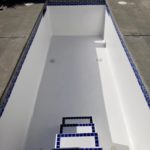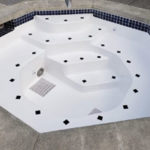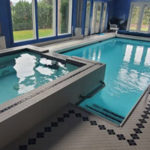Concrete swimming pools provide a luxurious and appealing retreat; however, they may become susceptible to cracking over time, necessitating concrete pool maintenance and repair options.
Comprehending the underlying causes of these imperfections is essential for preserving the integrity and aesthetic appeal of the concrete pool.
It is important to identify the common factors contributing to concrete cracking, as well as to understand effective methods for detecting such issues using tools like a pressure washer and epoxy injection, and the potential risks associated with neglecting them.
This guide offers professional advice on how to address both minor and significant cracks, using methods such as hydraulic cement and pool deck sealer, along with strategies for preventing future damage.
Engaging with this information will assist in maintaining your pool in optimal condition.
What Causes Cracks in Concrete Swimming Pools?

Cracks in concrete swimming pools can arise from various factors, adversely affecting both the aesthetic appeal and the structural integrity of the pool, and may require pool deck resurfacing.
Common causes include shrinkage, settling, and inadequate construction techniques, which may result in issues such as cracked concrete, compromised pool coping, the need for slabjacking, and the necessity for prompt pool deck repair.
It is essential for pool owners to comprehend these causes and employ pool deck cleaning methods, like using a pressure washer, in order to maintain their investment and ensure a safe swimming environment.
Furthermore, factors such as weather conditions, including changes in temperature, and the quality of materials utilized in construction can exacerbate these issues, highlighting the importance of awareness and proactive measures like using acrylic sealer to prevent extensive repairs in the future.
Shrinkage and Pool Deck Maintenance
Shrinkage in concrete can result in significant cracking, particularly in pool decks, due to the natural drying process and various environmental factors. Incorporating coloring agents may help reduce visible effects.
This phenomenon occurs as the water content in the concrete evaporates, leading to the contraction of the material.
During this process, tension forces are generated, which can result in unsightly cracks that not only detract from the aesthetic appeal but also compromise the structural integrity of the pool deck and may require stamped concrete for repair.
Settling
Settling occurs when the soil beneath a concrete structure, such as a pool deck, compacts or erodes, potentially leading to cracks and damage to the pool coping.
This compaction can arise from various factors, including fluctuations in moisture levels, heavy loads, and inadequate drainage.
When the ground settles unevenly, it creates pressure points that ultimately compromise the structural integrity of the structure, necessitating interventions such as slabjacking.
Furthermore, soil erosion caused by water runoff or landscaping activities can exacerbate these issues, highlighting the importance of property owners being attentive to their surroundings.
These methods can restore stability to the pool deck. To mitigate future problems, it is essential to maintain the integrity of the soil through proper landscaping practices and effective drainage solutions, ensuring a solid foundation for concrete structures.
Poor Construction
Poor construction practices can significantly increase the likelihood of cracking in concrete swimming pools, impacting both the pool deck and coping.
This can lead to not only aesthetic concerns but also potential safety hazards over time.
The integrity of a swimming pool is highly dependent on the methods and materials employed during its construction.
Inadequate material selection, such as the use of low-quality concrete or insufficient reinforcement, can accelerate the onset of cracking.
Furthermore, improper installation techniques, including insufficient curing time and inadequate expansion joints, exacerbate these issues.
To prevent such failures, it is essential to adhere to best practices, which include utilizing durable, high-strength materials and ensuring proper installation protocols, alongside attention to expansion joints.
Regular maintenance and timely repairs are also critical in addressing any emerging cracks before they escalate.
By prioritizing quality construction and ongoing maintenance, pool owners can significantly mitigate the risks associated with cracking, thereby ensuring a safe and enjoyable swimming experience for years to come.
How to Identify Cracks in Concrete Swimming Pools?
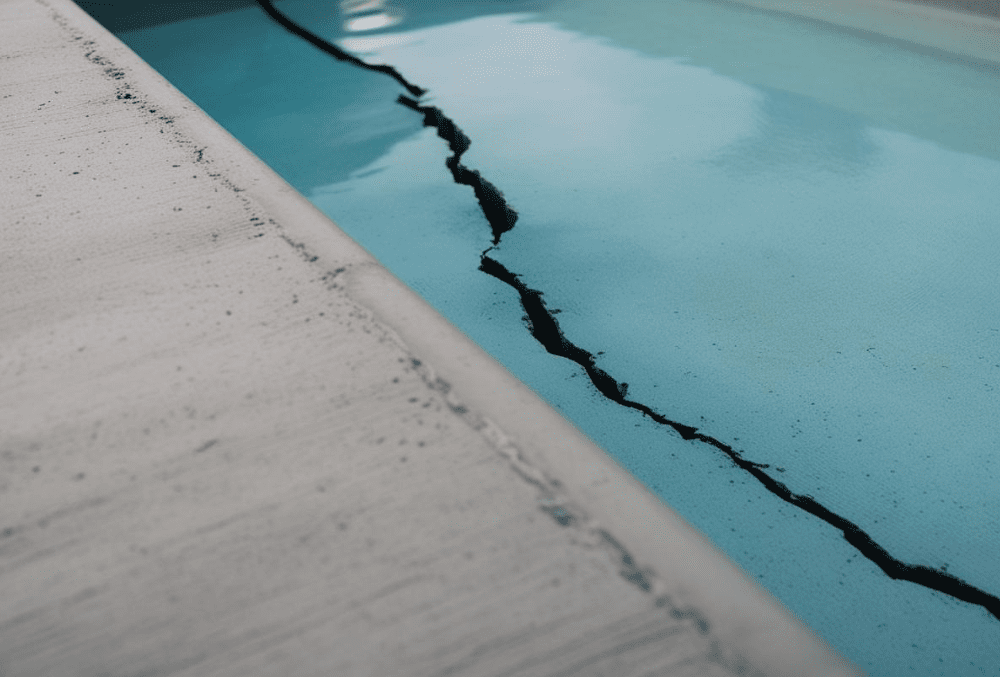
Identifying cracks in concrete swimming pools is crucial for timely repair and maintenance. This can be accomplished through various methods, including visual inspection, water loss tests, and dye tests.
Each method offers distinct advantages and assists in assessing the extent of the damage.
If left unaddressed, these issues could escalate into more significant problems, such as water leaks and concerns regarding structural stability.
Proper identification ensures that suitable repair options—such as concrete overlay or epoxy injection, as well as hydraulic cement—can be effectively implemented to restore the integrity of the pool.
Visual Inspection
A visual inspection serves as the initial step in identifying cracked concrete within swimming pools, enabling owners to detect visible signs of damage on the pool deck and coping.
Regular assessments are crucial for maintaining the structural integrity of the pool area. During a visual inspection, pool owners should examine various indicators of wear and tear, including:
- Cracks on the pool deck and coping
- Discoloration or stains that may indicate leaks
- Uneven surfaces that could pose safety hazards
- Loose tiles or coping stones requiring immediate attention
Conducting these inspections at least monthly is essential to ensure that any emerging issues are addressed in a timely manner.
Upon identifying any of these signs, it is imperative to explore maintenance and repair options to prevent further damage and guarantee safety.
By consistently attending to these details, including regular DIY repairs and monitoring water chemistry, pool owners can significantly extend the lifespan of their pools.
Water Loss Test
Conducting a water loss test is instrumental in identifying potential leaks in concrete swimming pools, thereby highlighting areas that may necessitate further examination for cracks.
When undertaking this water loss test, it is imperative to consistently monitor the water levels over a defined period, typically ranging from 24 to 72 hours.
By measuring the water loss during this timeframe, one can ascertain whether it exceeds normal evaporation rates, which generally approximate one-eighth of an inch per day.
Should the results indicate a significant loss, this serves as a prompt for immediate investigation into potential leaks.
Understanding the implications of these measurements is of paramount importance; early detection of leaks not only conserves water but also prevents costly structural damage over time, thereby ensuring the pool’s longevity and maximizing user enjoyment, especially in regions like Las Vegas.
Dye Test
A dye test is an effective method for identifying hidden cracks in the pool deck by utilizing colored dye to ascertain the source of water loss.
By carefully observing the movement of the dye, one can uncover even the most elusive fissures that might otherwise remain unnoticed.
This technique is essential for pool maintenance, as it aids in diagnosing potential issues before they develop into costly repairs.
This dye test not only assists in identifying the cracks but also highlights the significance of maintaining proper water chemistry.
Properly balanced water prevents corrosive damage, allowing the structure of the pool to remain intact over time, which is crucial for ensuring long-term pool integrity.
What Are the Risks of Ignoring Cracks in Concrete Swimming Pools?
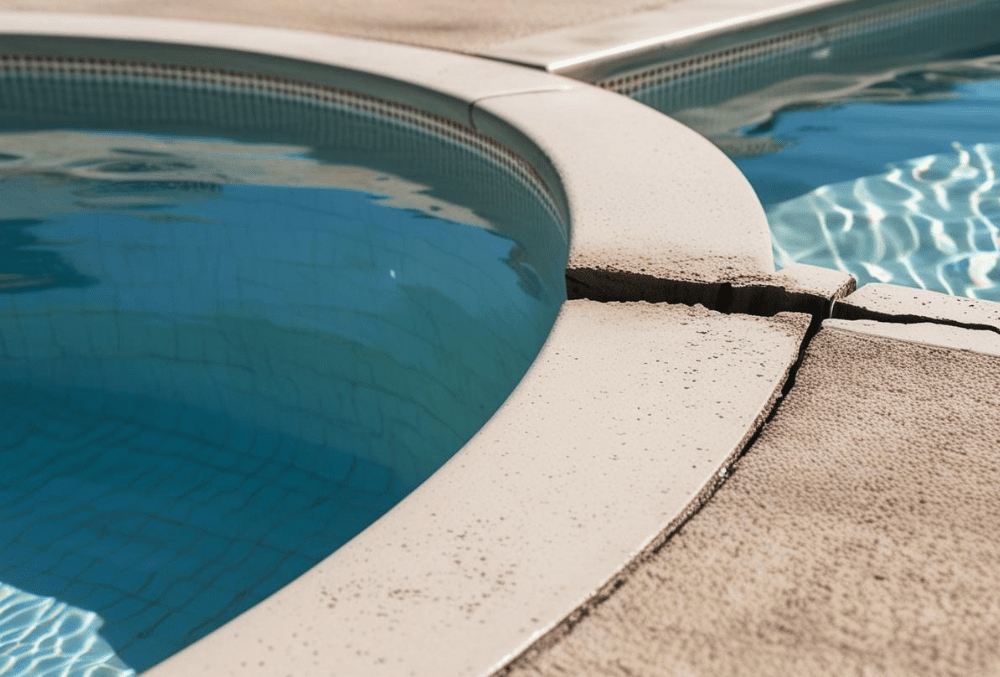
Neglecting cracks in concrete swimming pools can result in substantial risks, including structural damage, water leaks, and the potential for algae and bacteria growth in and around the pool area.
These concerns not only undermine the integrity of the pool but may also pose health hazards to swimmers.
Timely intervention to address cracks through appropriate pool deck repair techniques is essential for maintaining a safe and enjoyable swimming environment.
Structural Damage
Structural damage represents one of the most significant consequences of neglecting cracks in concrete swimming pools, potentially resulting in expensive repairs and compromised safety.
In some cases, employing the slabjacking process can provide effective solutions for certain types of damage.
Overlooking these cracks not only jeopardizes the pool’s visual appeal but also poses substantial safety risks.
Over time, water can infiltrate the structural components, leading to a deterioration of pool deck integrity—thereby creating uneven surfaces and increasing the likelihood of slips and falls.
Homeowners must remain vigilant for signs of damage, including cracks, shifting tiles, or leaks.
Monitoring the condition of the pool and its surrounding areas is essential. Early identification of structural issues can facilitate less invasive repair processes, allowing for DIY repairs where possible.
Repair options vary from straightforward patching techniques to more extensive solutions such as resurfacing or complete deck replacement.
Consulting with experts in Las Vegas pool plastering can ensure the right approach is chosen.
The selection of an appropriate method depends on the severity of the damage and the overall condition of the pool, underscoring the importance of consulting professionals in this specialized field.
Water Leaks
Water leaks resulting from cracks in concrete can lead to considerable water loss and increased maintenance costs, as well as contribute to further damage over time.
When these cracks are disregarded, the risk of water infiltrating structures increases, thereby heightening the potential for mold growth and structural issues that may necessitate extensive repairs.
What may begin as a minor concern can escalate, rendering remediation more complex and costly.
Regular maintenance checks are essential, as they enable individuals to identify these cracks early and address them before they develop into substantial problems.
Being proactive not only conserves water but also effectively safeguards the integrity of the property and its financial resources.
Algae and Bacteria Growth
The presence of cracks in concrete swimming pools can create conditions conducive to the growth of algae and bacteria, resulting in unsanitary swimming environments and potential health risks.
These imperfections not only compromise the structural integrity of the pool but also disrupt the water chemistry, making it increasingly challenging to maintain a balanced sanitation system.
When cracks develop, they can serve as reservoirs for debris and organic matter, leading to a higher nutrient load in the water, which fosters an environment favorable for undesirable biological growth.
To address these issues, it is essential to conduct regular inspections and promptly repair any surface cracking, as this can significantly enhance pool hygiene.
Additionally, the incorporation of proper filtration systems and regular chemical treatments is crucial in mitigating these risks.
Maintaining consistent water levels is also vital to prevent further damage and improve overall water quality.
By implementing these proactive maintenance practices, pool owners can ensure a cleaner and safer swimming experience for all individuals.
How to Fix Small Cracks in Concrete Swimming Pools?
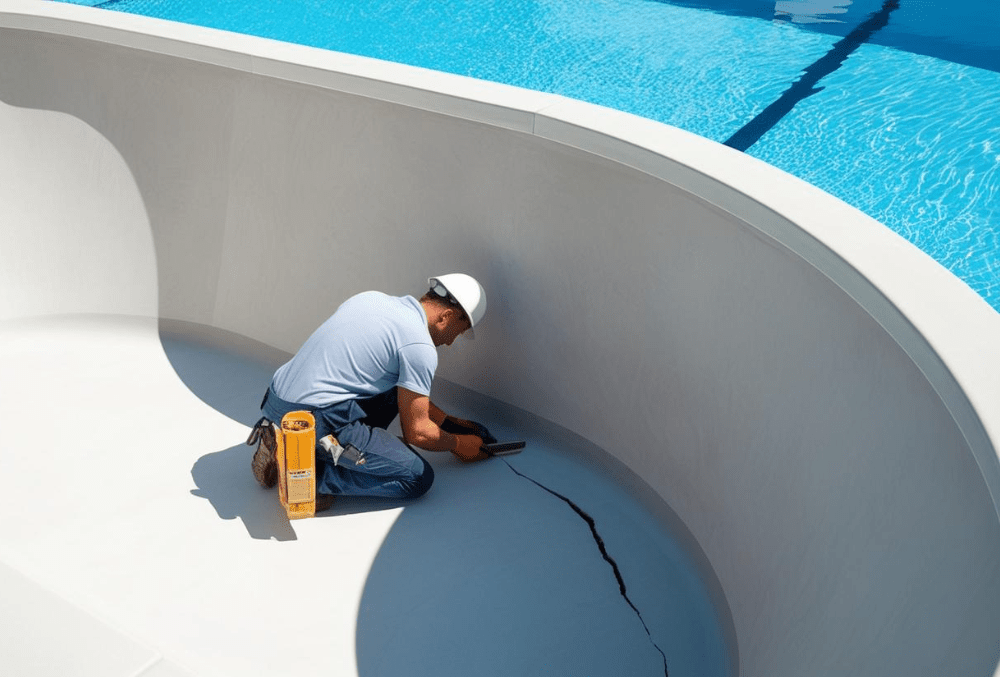
Repairing minor cracks in concrete swimming pools can typically be achieved through various effective methods, including epoxy injection, polyurethane foam injection, and hydraulic cement patching.
For residents in the area, pool repair Las Vegas Nevada professionals can offer expertise in these techniques. These techniques ensure prompt repairs and help to minimize the risk of further damage.
Each method offers distinct advantages, enabling pool owners to choose the most suitable solution based on their specific requirements.
Familiarity with these repair options not only enhances the pool’s aesthetic appeal but also contributes to its longevity and safety.
Epoxy Injection
Epoxy injection is a widely recognized method for repairing small cracks in concrete swimming pools, offering a durable and waterproof solution that aids in restoring structural integrity.
This innovative technique addresses surface imperfections while penetrating deeply into the material to fill voids and prevent further deterioration.
By employing a specially formulated epoxy resin, the process establishes a robust bond that reinforces the pool’s structure, making it an ideal choice for homeowners seeking dependable repairs.
The benefits of epoxy injection extend beyond aesthetics; they enhance longevity and reduce water leakage, ultimately minimizing maintenance costs and ensuring a safe swimming environment.
Polyurethane Foam Injection
Polyurethane foam injection is an effective method for addressing small cracks in concrete pools, providing both flexibility and an efficient means of sealing leaks.
This innovative technique involves the injection of specialized polyurethane foam into the cracks, where it expands and hardens to fill any voids, resulting in a durable and waterproof seal.
Unlike traditional repair methods that typically necessitate extensive surface preparation and can be time-consuming, this approach is efficient and minimally invasive.
Hydraulic Cement Patching
Hydraulic cement patching is an effective technique for repairing small cracks in concrete swimming pools, owing to its quick-setting properties and water resistance.
This innovative method not only reduces repair time but also ensures that the repairs are durable and capable of withstanding continuous exposure to water, making it an ideal choice for pool maintenance.
With a straightforward application process, those responsible for pool upkeep can efficiently address cracks that, if left unattended, may lead to more significant structural issues.
Hydraulic cement is particularly beneficial in the following situations:
- The pool is experiencing minor leakage due to cracks.
- Immediate repair is necessary during the swimming season.
- Environmental conditions necessitate materials that can set quickly, even in wet areas.
By utilizing hydraulic cement patching, one can enhance the longevity of the pool structure while minimizing disruptions in enjoyment or usage.
How to Fix Large Cracks in Concrete Swimming Pools?

Addressing significant cracks in concrete swimming pools typically necessitates more comprehensive measures, including structural repair, re-plastering, or resurfacing.
These approaches are essential to ensure the structural integrity and longevity of the pool.
Each method targets the underlying issues that contribute to the formation of cracks, making the selection of the appropriate strategy critical for effective maintenance and repair.
A thorough understanding of how to implement these solutions is vital for preventing further damage and preserving the pool’s functionality.
Structural Repair
Structural repair is essential for addressing significant cracks in concrete swimming pools, typically necessitating specialized techniques and materials to restore the pool’s integrity.
These issues not only compromise the visual appeal of the pool but can also result in considerable water loss and potential structural failures if not addressed promptly.
Timely intervention is crucial for maintaining a safe and enjoyable swimming environment.
Professionals frequently employ techniques such as epoxy injection and polyurethane foam to effectively seal cracks, ensuring durable results.
Re-plastering
Re-plastering is a highly effective method for addressing significant cracks in concrete swimming pools, or for those considering fiberglass pools Las Vegas options.
This process provides a new, watertight layer that enhances both the aesthetic appeal and functionality of the pool.
Not only does re-plastering restore the visual attractiveness of the pool, but it also contributes to its durability and longevity. When water infiltrates cracks, it can lead to additional damage and costly repairs in the future.
Consequently, re-plastering is an essential intervention for preserving the structural integrity of a swimming pool.
It is recommended to consider this repair option when noticeable cracks appear or when the plaster surface exhibits signs of wear and roughness.
Promptly addressing these issues ensures that the pool remains both inviting and safe for users.
Resurfacing
Resurfacing is a viable option for addressing significant cracks in concrete swimming pools, as it involves applying a new layer of material over the existing surface to restore both durability and aesthetics.
This process not only enhances the visual appeal of the pool but also significantly extends its lifespan.
By utilizing high-quality resurfacing compounds, one can effectively seal existing cracks and prevent future damage, rendering it an excellent choice for pools that have deteriorated over time.
Some advantages of this approach include:
- Cost-Effectiveness: Resurfacing is generally more affordable than complete replacement.
- Quick Turnaround: The process typically requires less time compared to a full renovation.
- Enhanced Safety: A textured surface can improve traction, thereby reducing the risk of slips around the pool.
Resurfacing may be particularly beneficial in scenarios such as:
- When the pool exhibits extensive wear and tear over its lifespan.
- For pools located in warmer climates, where harsh sunlight can cause fading and cracking.
- When aesthetic updates are required prior to hosting events or gatherings.
In summary, resurfacing not only restores the charm of the pool but also reinforces its functionality, making it a prudent consideration for any pool owner.
How to Prevent Cracks in Concrete Swimming Pools?
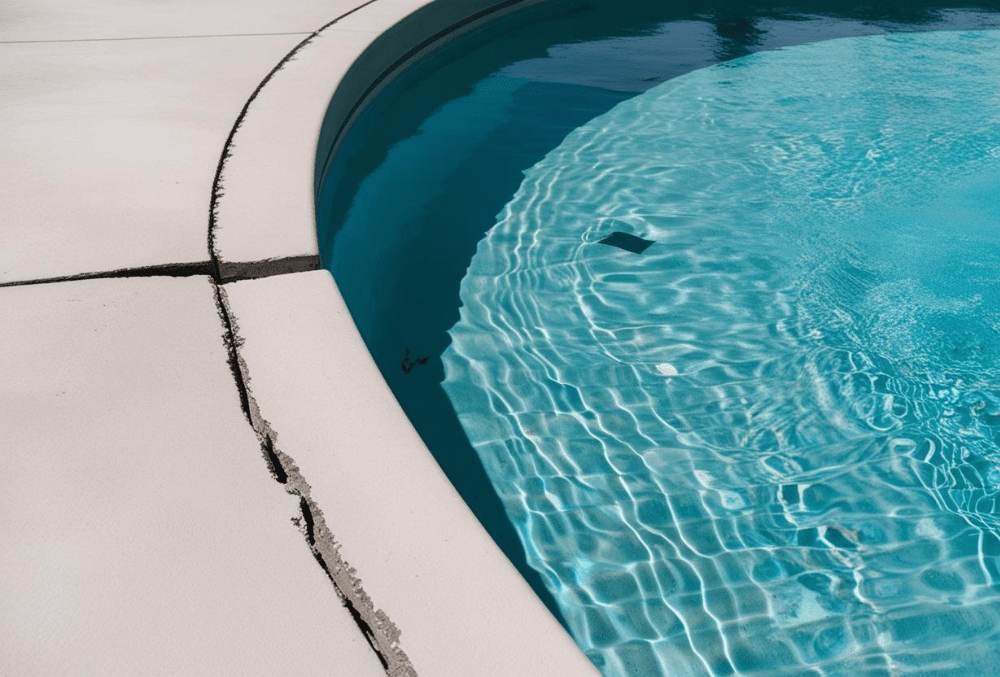
Preventing cracks in concrete swimming pools requires the implementation of appropriate construction techniques, diligent maintenance of the pool deck, and the maintenance of proper water balance and chemical treatment.
Each of these components is essential in ensuring the longevity and safety of the pool structure, thereby minimizing the risk of cracks developing over time.
By understanding and applying these preventive measures, pool owners can safeguard their investments and enhance the overall swimming experience.
Proper Construction Techniques
Utilizing proper construction techniques is essential in preventing cracks in concrete swimming pools, as it establishes the foundation for a durable and stable structure.
Adopting appropriate installation methods not only enhances the aesthetic appeal of the pool but also significantly contributes to the longevity of the pool area.
The selection of high-quality materials is critical, as these materials directly influence the concrete quality and overall integrity of the pool deck.
For example, selecting aggregates that are capable of withstanding moisture and temperature fluctuations ensures a robust foundation that resists cracking.
Implementing expert installation practices, such as proper layering and curing techniques, can mitigate common pitfalls that lead to structural weaknesses.
Regular Maintenance and Inspection
Regular maintenance and inspection are essential for preserving the integrity of concrete swimming pools and preventing the development of cracks.
Routine check-ups and diligent upkeep are vital practices that every pool owner should adopt. Engaging in these tasks not only extends the lifespan of the pool but also enhances its aesthetic appeal and safety.
To ensure a well-functioning pool, owners should incorporate the following activities into their maintenance schedule:
- Weekly Cleaning: Skimming debris from the water surface, brushing the walls, and vacuuming the floor are necessary to maintain cleanliness.
- Chemical Balancing: Regular testing and balancing of pH, alkalinity, and chlorine levels are crucial to preventing water-related issues.
- Routine Vinyl Liner Check: Monitoring the liner for tears or leaks is essential in preventing more significant damage.
- Annual Professional Inspection: Hiring a professional for a comprehensive pool evaluation ensures compliance with safety standards and allows for the early identification of potential issues.
Adhering to these guidelines can significantly impact the overall condition of the pool, ensuring it remains a safe and enjoyable environment for all users.
Proper Water Balance and Chemical Treatment
Maintaining proper water balance and chemical treatment is essential for preventing cracks in concrete swimming pools. Imbalanced water chemistry can accelerate degradation and lead to structural issues.
Ensuring that water chemistry remains within the optimal range is critical not only for the longevity of the pool but also for the safety and enjoyment of its users.
Consistent analysis of factors such as pH levels, alkalinity, and calcium hardness is necessary to identify imbalances before they develop into significant problems.
For example, if the pH is too low, it can lead to the erosion of the pool’s surfaces, while excessively high alkalinity may result in cloudy water and scaling.
Regular testing and adjustments enable pool owners to maintain a healthier environment that minimizes corrosion and prevents the formation of cracks.
- Monitoring chemical levels prior to seasonal changes can prove particularly advantageous.
- Properly balanced water not only supports the structural integrity of the pool but also enhances the overall swimming experience.
